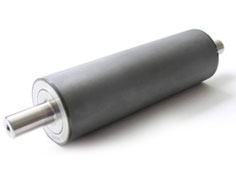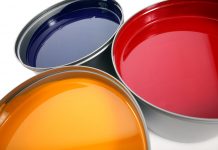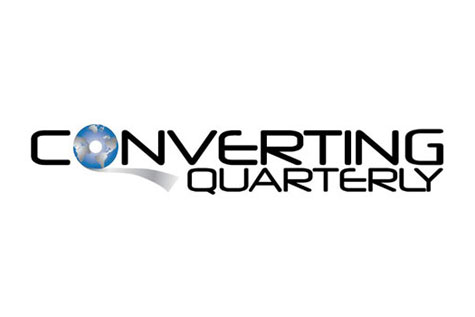The anilox roll is synonymous with the flexographic printing process. With this piece of equipment being specific to flexo, and the predominant pressure sensitive label printing process in most parts of the world, its importance to the industry is paramount.
While substrates and inks are what an end user will see and feel it is the anilox roll is the vehicle for how these elements ultimately come together.
Anilox rolls are typically made from steel or to a lesser extent an aluminum core and the key to the anilox roll function is its a hard wearing cylinder whose surface contains millions of very fine engraved cells. To facilitate the flexo printing process the anilox roll comes into contact with the ink via a metering roll, with a doctor blade then scrapeing off the excess ink from the anilox roll surface. The ‘wet inked’ roll then contacts the flexo printing plate, thus transferring the ink and in turn the ‘inked’ plate then comes into contact with the substrate, i.e. the material being printed.
The function of an anilox roll is to control the wet ink film thickness delivered to the printing plate and the engraved cell volume, the angle of the cells, and line screen all factor into determining the amount of ink to be transferred to the plate which is crucial to quality print.
Over the years many aspects of the flexo and flexo label industry have evolved as customer demands for higher quality print at lower cost and increased speed have put pressure on flexo versus its main rival in the gravure printing process.
As such flexo press, plate and ink technology have improved to facilitate the increased end user demands and all three work directly with the anilox roll.
The method behind how anilox rolls are engraved has played a key role in their advancement as over the years, anilox rolls have evolved in part, to laser engraving the anilox cells, which has answered some of the need for higher quality print.
However, whilst the anilox cell engravings get a lot of credit, the key to successful anilox technology starts with its base coating – chrome oxide or commonly referred to as ‘chrome ceramic’. Without a head wearing coating any high quality engravings and technical finishes (such as for embossing) will wear too quickly or stain too easily on a soft porous coating and so the harder and less porous the anilox coating, the better.
The chrome oxide ‘ceramic’ anilox coating is applied through a plasma spray device on to the roll or the anilox sleeve’s metal substrate, forming a mechanical bond and a key consideration to the bond is the melt temperature of the powder chemistry to increase hardness and to lower porosity. In general chrome ceramic coatings have an average hardness of 1200-1,400 + Vickers.
Degradation to the print quality is caused through abrasive wear caused by doctor blade scratching the roll and this will be greatly decreased with a harder anilox cylinder coating which helps ensure an engraving will remain the same for a longer period of time.
Of the three differentiating elements of an anilox cylinder– cell volume, line count and cell angle – print industry experts suggest that the anilox cell volume plays the most critical role in determining the end print quality as the cell volume controls the ink film, which intern determines density. Ink volume that is too high has a much bigger part to play in low quality print than a line screen that is too low, for example.
As the cell volume of the anilox cell controls the ink film thickness and thus density and dot gain. It is the most critical element in defining the engraving specifications and the focus of anilox roll research is in how the cell volume can aid better ink release properties.
The line count of an anilox roll controls the resolution or smoothness of the ink lay-down and the higher the resolution needed, the higher the line count is required which in turn means that for the given cylinder size the smaller the engraved cells will need to be and a higher number of cells per square inch will be required to facilitate this.
Getting this fine balance wrong can be disastrous for the print quality as go too high in line screen for the specified volume, and you’ll get plugged cells, and scored anilox rolls as a result.
With the improvement in inks, plate materials, and anilox engraving techniques, line screens have drastically increased and cell volumes decreased with printers able to get the desired ink densities with much thinner ink films which in turn allows for the decreased volumes and ink savings. The end result is smoother solids and cleaner type and half-tones.
Anilox roll research for the future may well be mindful of EU regulations in respect of the chemicals that are used in the process as chromium compounds are coming under increasing restrictions, not just as a response to increased health and safety of the employees in industries using chromium compounds (as gravure and flexo do) but as a response to decreased food contamination and reduced ground water pollutants.
In the EU, US and even China, focus in recent years has somewhat demonised chromium compounds and whilst nearly all operators using chromium compounds do so with adherence to local and international laws, there are some that dont and as evidenced even in recent years, accidents can and do happen so it may bode well to start embracing greener technologies in the near future to lessen the impact of events such as the anticipated EU chromium vi ban and embrace new greener processes now to also gain market share and competitive advantage as consumer attention is focused on less green packaging processes that their food is wrapped in.











